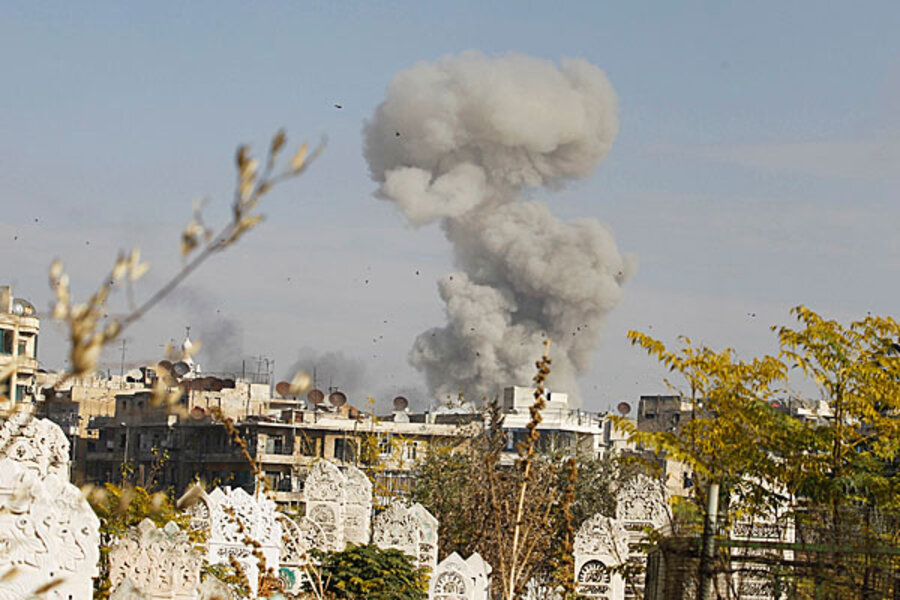Rebels capture oil field, Syria responds with airstrikes
Loading...
| Beirut
A string of government airstrikes on rebel-held areas in the north on Saturday killed at least 44 people, activists said, as Al Qaeda-linked rebels captured one of the country's oil field in the east.
Rami Abdurrahman, the director of the Britain-based Syrian Observatory for Human Rights, said the attack on the rebel-held town of al-Bab near the northern city of Aleppo is the deadliest of the three raids. He said that strike killed 22.
Fighter jets also bombed two rebel-held districts of Aleppo, Syria's largest city. Government warplanes missed their target in the Halwaniyeh neighborhood and sent bombs into a crowded vegetable market, killing 15 people, Abdurrahman said. Seven people died in a third airstrike in the Karam el-Beik district, according to the activist group. The Observatory has been documenting the conflict by relying on a network of activists on the ground.
Air power has been Syrian President Bashar Assad's greatest advantage in the civil war. Over the past year, his forces have exploited it in a wide-ranging offensive to push back rebel gains in the north and around the capital, Damascus.
Syrian state television confirmed the fighter jets were in the north, but said they targeted "gatherings of terrorists" in Aleppo, killing a large number of them. Syrian state media routinely refers to rebels fighting to topple Assad's government as terrorists.
Another activist group, the Aleppo Media Network, confirmed Saturday's airstrikes and posted a video of what it says was the aftermath of the al-Bab raid. Plumes of smoke rose from twisted metal and chunks of broken-up concrete strewn on the ground.
The video appeared authentic and was consistent with The Associated Press' reporting of the airstrikes.
Meanwhile, fighters from Al Qaeda-linked Jabhat al-Nusra ousted government troops from the al-Omar field Saturday during an overnight battle, Abdurrahman said. Syrian state media and officials did not mention it.
It is not clear if the field is operational. Before the uprising began in early 2011, the oil revenues provided around a quarter of the government's budget. In 2010, Syria produced about 380,000 barrels a day.
Oil exports have ground to nearly a standstill since. Assad's government now imports refined fuel supplies to keep up with demand amid shortages and rising prices.
In late 2012, rebels began seizing fields in Deir el-Zour, one of two main centers of oil production. In February, they captured the large Jbeysa oil field after three days of fighting. A year ago, rebels briefly captured al-Omar field only to lose it to government troops days later.
Rebels largely have been unable to benefit from the oil fields. The country's two refineries remain under government control and the threat of airstrikes make working the fields difficult.
Also Saturday, a pro-government television station said gunmen fired at a vehicle belonging to a Syrian Cabinet minister, killing his driver. Al-Ekhbariya said Minister Ali Haider was not in the car when it came under fire while traveling on a highway that links the central city of Hama with Tartous on the Mediterranean coast. A government media office confirmed the report.
Syria's civil war started as a peaceful uprising against Assad that deteriorated into all-out civil war after a government forces violently cracked down on protesters. The conflict has killed some 120,000 people, activists say. The United Nations said in July that 100,000 Syrians have been killed, and has not updated that figure since. Millions of Syrians have been uprooted from their homes because of the fighting.
___
Associated Press writer Diaa Hadid contributed to this report.
Copyright 2013 The Associated Press. All rights reserved. This material may not be published, broadcast, rewritten or redistributed.







